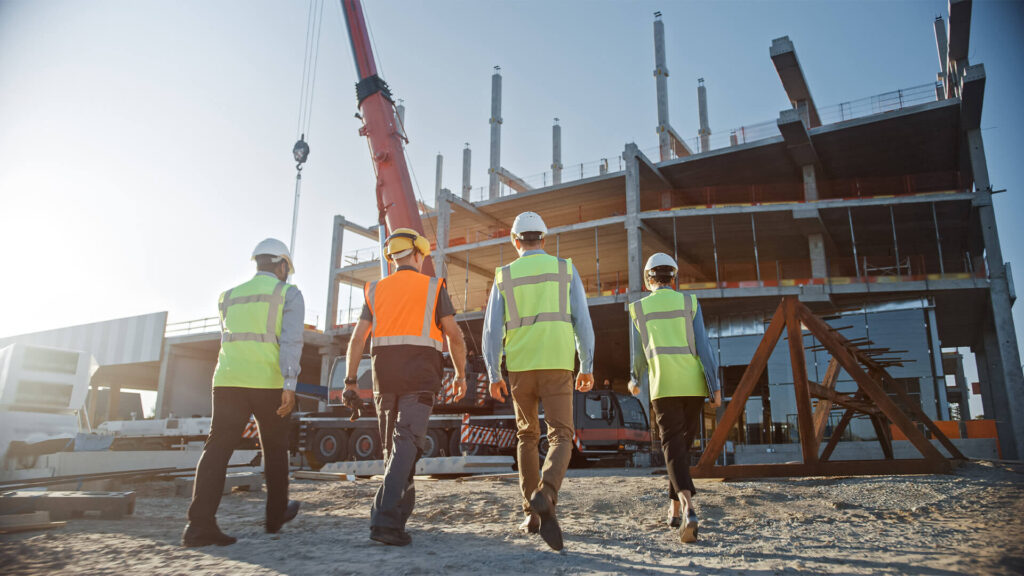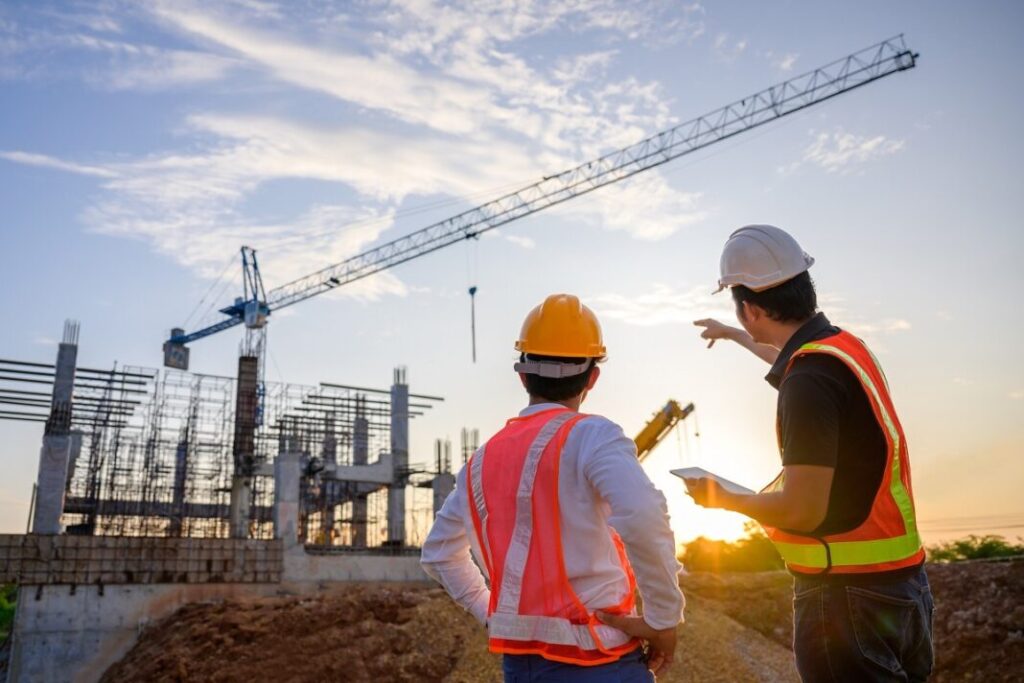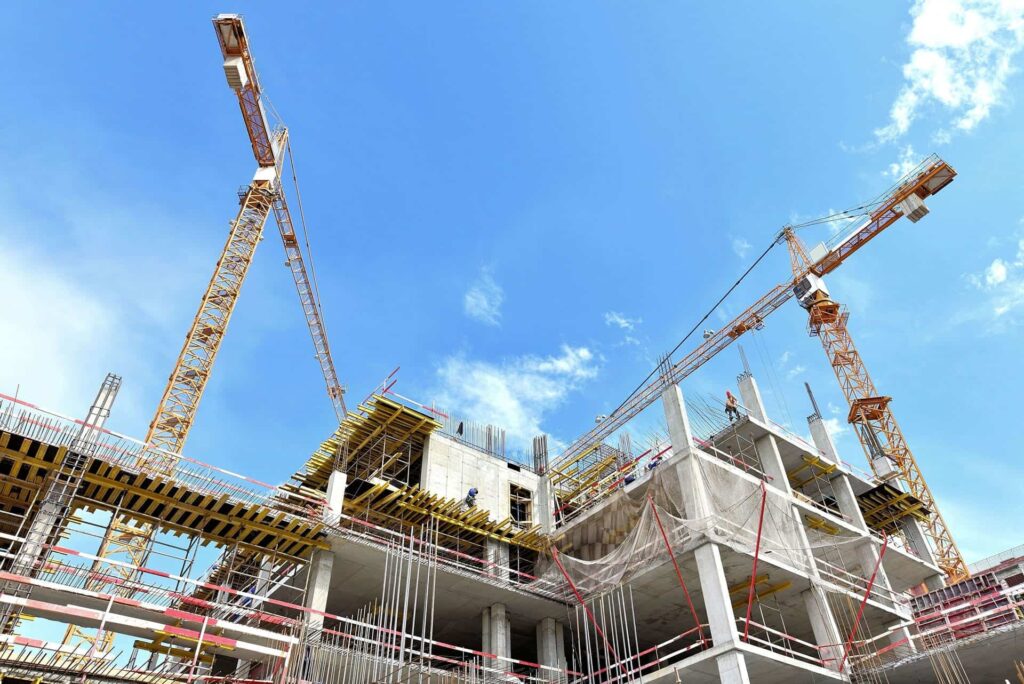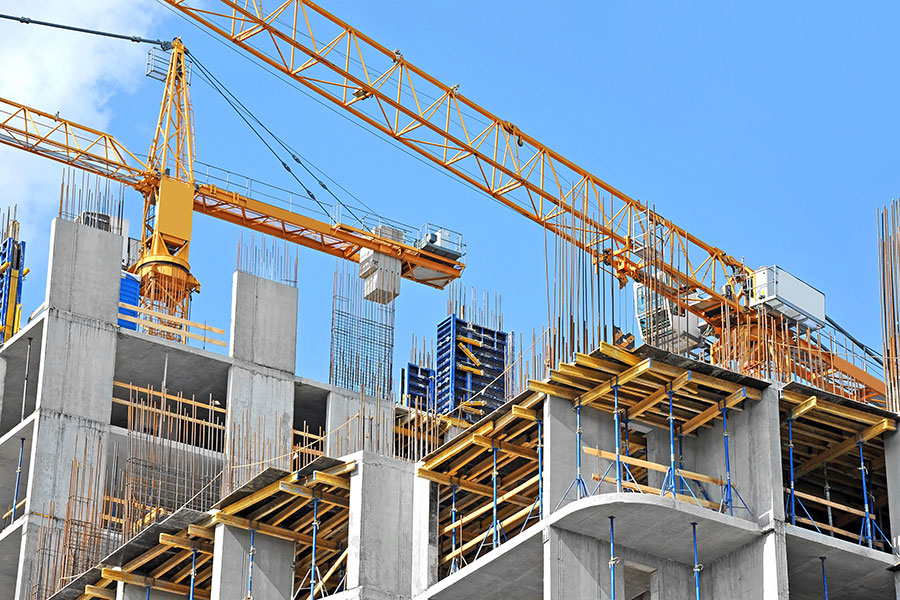
When it comes to construction, there are significant differences between commercial and residential projects that go beyond just the type of structures being built. Commercial construction often involves larger scales, such as office complexes, retail stores, and other business operations, while residential construction focuses on creating homes for individuals and families.
Factors like construction methods, building materials, and completion time vary substantially. Commercial projects typically demand elaborate security systems, longer lifespans, and may even involve lengthy environmental reviews, unlike single-family homes. Understanding these distinctions is crucial for anyone navigating the construction industry, as each type of project presents unique challenges and requirements.
Commercial Construction

Commercial construction involves the development of commercial structures intended for business purposes, such as office buildings, retail spaces, shopping centers, and warehouses. These commercial projects serve the unique needs of commercial clients and require meticulous planning, adherence to zoning laws, and collaboration with various stakeholders to meet specific demands while complying with regulatory standards. Projects in the commercial construction industry often deal with very different project scopes and more elaborate security systems due to safety concerns related to public use and traffic.
Residential Construction
Residential construction focuses on creating residential buildings and living spaces, including single-family homes, apartment buildings, and townhouses. These residential construction projects prioritize comfort, functionality, and aesthetic appeal while adhering to local building codes and safety regulations. Residential construction companies must communicate effectively with homeowners and pay attention to detail to meet the personal needs of residents. Projects may use timber frame construction, which is common in residential design due to its affordability and flexibility.

Key Differences Between Commercial and Residential Construction
1. Purpose and Functionality
Commercial construction is primarily designed to cater to commercial space like businesses, office buildings, and shopping centers that accommodate high levels of traffic and usage. These commercial corridors are geared toward functionality that supports professional operations.
On the other hand, residential refers to personal living spaces. Residential construction creates environments for families and individuals, such as residential and commercial properties where the focus is on bedrooms, kitchens, and other personal areas for comfort.
2. Building Codes and Regulations
Commercial construction must meet stricter codes involving building permits, fire safety, accessibility, and structural integrity. These often involve installing more elaborate security systems and ensuring commercial buildings’ longer lifespans.
In contrast, residential construction vary in codes based on region, typically requiring simpler building permits and regulations. Residential and commercial projects must each comply with different zoning laws depending on location and usage. Because commercial construction projects tend to be more extensive and more complicated than a home, they take a bit longer to complete.
3. Materials and Equipment Used

Commercial construction companies use advanced, durable materials like steel and concrete, as well as industrial scale construction equipment to support larger, long-lasting structures. You’ll often see steel slope roofing materials or low slope roofing materials used in large-scale builds.
Residential contractors, however, rely on wood, drywall, and standard construction equipment suitable for homes. While less specialized, the materials balance quality and cost, aligning with the construction business focus on homeowner budgets.
4. Design Complexity
Commercial projects usually involve complex architectural planning, large structural systems, and integration with commercial equipment and technology to suit business needs. These designs can range from industrial buildings to many modern commercial buildings with energy-efficient and tech-enabled features.
Residential buildings, however, maintain user-friendly layouts, with custom designs for families and individuals. While less complex, they still must meet structural and safety codes.
5. Budget and Costs

Due to the scale, scope, and materials involved in commercial construction, budgets are typically much higher. Clients must invest in specialized systems, professionals, and durable structures.
Residential construction costs are lower and more adaptable to personal finances. These considerations highlight the differences between residential and commercial budgeting approaches.
6. Project Timeline
Due to their scale and detail, commercial construction projects generally take longer to complete. Depending on the design and permit complexities, they can take months or years.
Residential construction, in contrast, tends to have shorter timelines, fewer layers of bureaucracy, and smaller work scopes. However, unexpected delays, such as weather or disruptions to nearby buildings, can still occur.
7. Workforce and Expertise
Construction teams for commercial projects consist of highly specialized professionals — engineers, electricians, system installers, and project managers.
Residential contractors typically manage smaller crews with general expertise. Despite the smaller size, the focus is still on delivering quality results tailored to homeowners.
Why the Differences Matter?
Understanding the construction vs residential differences has a significant impact on client decisions. The entire project scope, budget, timeline, and team composition all depend on whether the structure is residential or commercial.
Recognizing these differences helps clients avoid unexpected costs and set realistic expectations from the start.
Influence on Hiring the Right Construction Companies
The unique requirements of residential and commercial construction determine the ideal contractor. Commercial construction companies should demonstrate experience with involve building structures that support advanced systems and safety compliance.
For homes, residential construction companies should offer customizable, empathetic service and knowledge of residential construction industry standards. Hiring the right expert ensures the project aligns with vision, compliance, and budget goals.
Importance for Construction Companies to Specialize and Market Effectively
Specialization helps construction firms build credibility. Firms in the commercial construction industry must showcase their ability to manage high-budget, regulatory-heavy projects and attract commercial clients.
On the other hand, residential construction companies can appeal to homeowners by emphasizing personalized service, quality, and reliability. Marketing these strengths clearly helps companies grow within the construction business and attract projects that match their expertise.
Challenges in Commercial and Residential Construction
Construction projects, whether commercial or residential, always come with their own unique set of challenges. However, there are certain challenges that are specific to each type of construction and require different approaches to overcome.
Commercial Construction
Complexity of Projects: Large-scale projects often involve intricate designs and coordination with multiple stakeholders, increasing the likelihood of delays and budget overruns.
Regulatory Compliance: Strict building codes and zoning laws require constant monitoring and adaptation to ensure adherence throughout the project lifecycle.
High Capital Investment: Commercial ventures demand significant upfront investments, which can strain financial resources and raise risks if unforeseen issues arise.
Residential Construction
Customization Expectations: Homeowners often request highly personalized designs, which can lead to changes mid-project, affecting timelines and costs.
Labor Shortages: Skilled labor specific to residential construction can be limited, impacting both project schedules and quality standards.
Material Costs Volatility: Fluctuations in the prices of materials, such as lumber and concrete, can disrupt budget planning and cause financial strain.
How to Choose the Right Construction Approach?
Selecting the proper construction approach is crucial to the success of any project. Here are some key factors to consider when making this decision:
Project Goals and Requirements: Clearly define the scope, budget, and timeline of your project. A well-outlined plan will help determine whether a traditional, design-build, or modular approach is most suitable.
Budget Constraints: Evaluate which approach aligns with your financial resources. For instance, modular construction might offer cost efficiencies, while design-build methods can streamline communication and reduce unforeseen expenses.
Timeline Demands: If time is a critical factor, explore options like prefabrication or fast-track construction techniques to accelerate project completion.
Site Conditions: Assess the physical characteristics of your site, as they may influence certain methods. Complex terrains or space restrictions might require specialized approaches.
Expertise and Resources: Consider the availability of skilled professionals and access to materials. Ensuring compatibility with your team’s expertise can improve efficiency and output quality.
Environmental Impact: Evaluate sustainable construction methods that align with environmental standards if eco-friendliness is a priority.
Choosing an approach that suits the project’s unique demands helps to minimize risks, manage costs effectively, and achieve high-quality results. Proper research and consultation with industry experts are essential to making informed decisions.
Trends in Commercial and Residential Construction
The construction industry is evolving rapidly, with notable trends shaping both commercial construction projects and residential properties. One significant shift is integrating smart technology, including automated lighting, energy-efficient HVAC systems, and IoT-enabled mechanical systems, which enhance functionality, safety, and sustainability.
Additionally, modular construction continues to gain traction in both sectors. These methods shorten the construction process, reduce material waste, and cut overall costs. For commercial construction projects, modular methods also help manage the longer completion time commercial projects often require by expediting certain stages.
Another growing trend is the emphasis on adaptive reuse and mixed-use developments to address urban density challenges and efficiently use available space. These innovative builds blend residential properties, commercial space, and recreational areas within a single development, promoting community cohesion and minimizing issues like disrupting nearby buildings.
Moreover, the adoption of specialized equipment and advanced construction technologies continues to define how construction tends to evolve. These advancements reflect the industry’s commitment to innovation, sustainability, and meeting the needs of diverse clients.
Conclusion
Selecting the right construction approach, whether for residential properties or commercial construction projects, requires careful consideration of multiple factors. These include budget, materials, environmental impact, timeline, and team capabilities. A thorough evaluation ensures that the chosen method aligns with project-specific goals and conditions.
By conducting detailed research and seeking expert input, teams can make informed decisions that reduce risks and improve outcomes throughout construction. With proper planning, the use of specialized equipment, and thoughtful execution, the result is a project that not only meets expectations but delivers long-term value and success.
